York University has an enduring commitment to the pursuit of knowledge that comes from many differing perspectives and ways of knowing. Indigenous leadership is vital in this. In the coming years, Indigenous leadership in York’s research will create a unique space to support contributions to Indigenous knowledges within and beyond the academy.
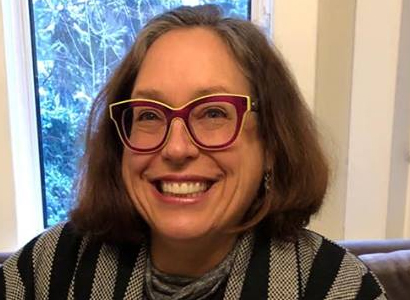
Enter Faculty of Liberal Arts & Professional Studies Professor Carolyn Podruchny, an academic in the Robarts Centre for Canadian Studies and an expert in Indigenous and French relations and Métis history.
Three years ago (2018), she won a Partnership Development Grant from the Social Sciences and Humanities Research Council (SSHRC). Her project, “Aandse: Anishinaabe Ways of Knowing and the Transformation of University-based Knowledge Creation and Transfer,” has come to fruition.
Podruchny sits down with 'Brainstorm' to discuss.
Q: This project was highly collaborative and interdisciplinary. Who were your partners and how did co-creation work?
A: This was the brainchild of the late Lewis Debassige, an Elder from M’Chigeeng First Nations. I had been visiting the Ojibwe Cultural Foundation (OCF), and he was an Elder there. When I first visited, he said, “Why don’t you bring some students?” So, that started an annual visit with students.
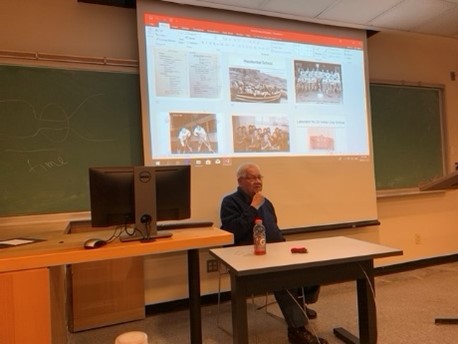
Then Lewis suggested, “Why don’t you make this more formal, bring more students, come and stay for a while, and we will set up a program.” He also emphasized that Anishinaabe knowledge needs to start entering the university.
My initial partner was the OCF. Then we expanded to include the Wikwemikong Heritage Organization, and another group, co-founded by one of my former PhD students, called Active History.
The program was an expansion of the History of Indigenous Peoples Network, which is a research cluster at the Robarts Centre for Canadian Studies. The Robarts Centre has been incredibly supportive. They were the first believers in our project. They provided us with valuable administrative support and space; they created the loveliest welcoming environment.
More broadly, York has been nothing but supportive as well – the Provost, VPRI, LA&PS, the Libraries, etc.
Q: What were the project’s objectives?
A: The objectives were to create the context for sharing and learning, both in Anishinaabe spaces and in university spaces, and to bring university people to Anishinaabe spaces and Anishinaabe people to university spaces.
Q: Please describe the project, its themes and audiences.
A: Our big feature event is an annual summer institute called Manitoulin Island Summer Historical Institute (MISHI). In 2017, we focused on the theme of land. In 2018, the theme was clans or Doodemag. The focus of the third was women’s leadership.
We’ve had students, faculty members, librarians, university administrators, as well as Anishinaabe people from different parts of Canada and the United States. And people from Manitoulin Island wanted to participate as well. For example, the former Chief of Wiikwemkoong, Peggy Pitawanakwat, who is coordinator, First Peoples, at Seneca College.
Q: Who were the instructors, speakers and supporters?
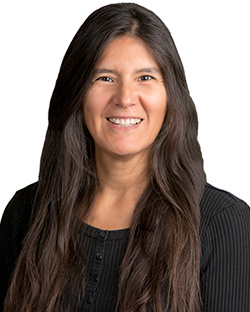
A: The main instructors at the institute have been Lewis Debassige and Alan Corbiere (History Department at York). Deborah McGregor (Canada Research Chair in Indigenous Environmental Justice, in both the Faculty of Environmental and Urban Change and Osgoode Hall Law School at York) has also been an essential contributor.
We’ve had Elders some in to speak, including Rita Corbiere from Wikwemikong and Marion McGregor from White Fish River.
Q: What are some activities?
A: Our summer schools are a blend of lectures and tours – learning in place but also different learning activities. We focused on learning by doing and storytelling.
In terms of activities, we’ve done bannock-making, medicine gathering, clay-making and ceramic work, birch bark and willow work to create baskets, and porcupine quill and beading workshops.
We’ve also done language learning, developing vocabulary lists and creating spaces where students can speak Anishinaabe and learn useful, everyday phrases. We brought in specialists in Anishinaabe history from different places.
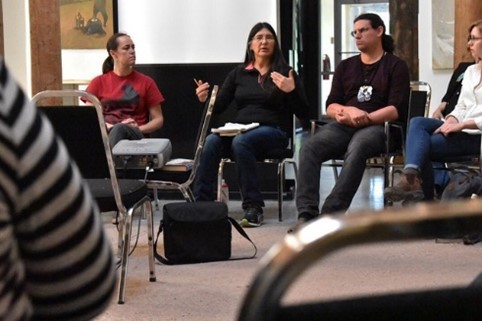
Q: Art has always been a key part of this.
A: Yes. We have attracted artists in this project. One of our co-applicants, artist Anong Beam, former director of the OCF and daughter of well-known artist Carl Beam, insisted from the beginning that we should always have artists at our summer institute. So, we invited Michael Belmore, Nico Williams, Alan Corbiere, Steven George, Deborah McGregor and others. Art has always been the big focus.
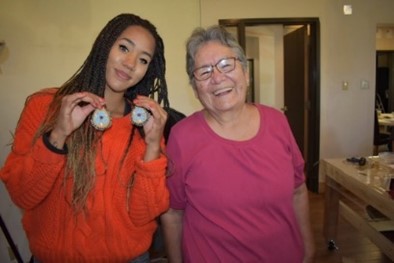
Q: Part of this project involved a literature review. What did you glean from this? How have universities, York in particular, been handling decolonializing?
A: Universities have been colonizing institutions. They objectified Indigenous people and shut Indigenous people out of the process through structural inequalities.
The way to decolonize the university is to bring Indigenous people to the university and have them change the structures to suit Indigenous epistemologies and pedagogies.
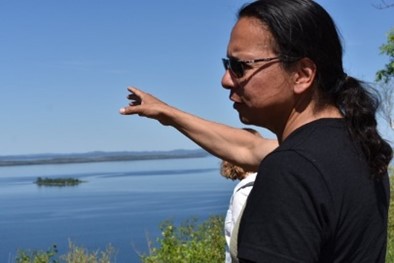
York has been doing fairly well, but it needs to keep hiring Indigenous people. I have one great success story: my former PhD student Alan Corbiere, mentioned earlier. He was hired by the History Department a year ago in a tenure-track position.
Also, York has supported the Center for Aboriginal Students Services for recruiting and supporting Indigenous students.
Furthermore, I believe this project has allowed York in its journey to decolonize by bringing in curricular activities and creating new forms of classes. Some students in Indigenous studies earned their experiential education course by attending MISHI, for example.
To learn more about Podruchny, visit her Faculty profile page. It is noteworthy that she plans to publish a scholarly article describing the kinds of Anishinaabe pedagogies gathered through this process.
To learn more about Research & Innovation at York, follow us at @YUResearch; watch our new animated video, which profiles current research strengths and areas of opportunity, such as Artificial Intelligence and Indigenous futurities; and see the snapshot infographic, a glimpse of the year’s successes.
By Megan Mueller, senior manager, Research Communications, Office of the Vice-President Research & Innovation, York University, muellerm@yorku.ca
